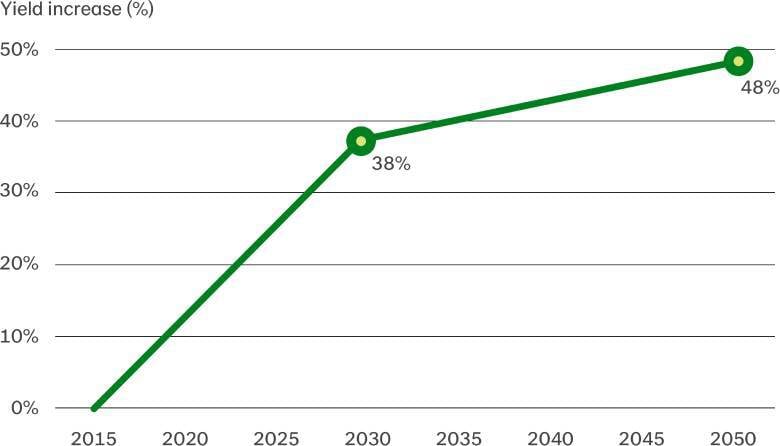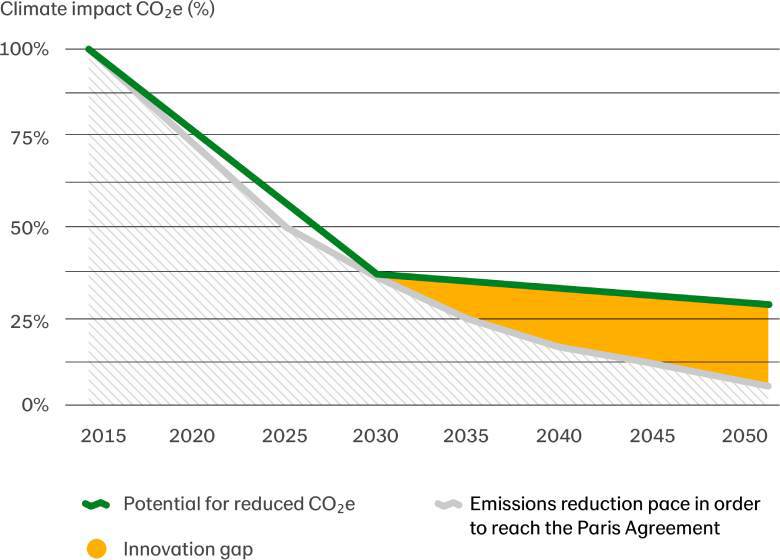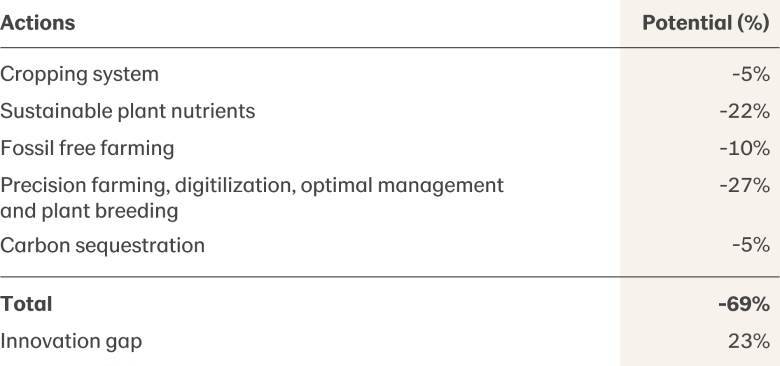
Lantmännen is an agricultural cooperative and Northern Europe’s leader in agriculture, machinery, bioenergy and food products.
Our report, Farming of the Future, shows how we can increase harvests by 50 percent by 2050, while at the same time reducing the climate impact of cultivation, in line with the Paris Agreement.
The conclusions in the report are based on Swedish agricultural conditions; however, the same challenges and opportunities can be seen in the other Nordic countries. The model used to analyze the various measures could also be used to examine sustainable farming techniques in different agricultural conditions around the world.

Figure 1. Potential for yield increase 2015-2050, calculated per hectare winter wheat

Figure 2. Potential for reduced climate impact from cultivation, calculated per ton winter wheat, and gap towards the Paris Agreement.

Figure 3. The actions contribute to a reduced climate impact of 69% until 2050. To close the gap towards the Paris Agreement – calculated to 23% - innovation within all areas is needed as well as handling of nitrogen leakage from soil.
A whole series of initiatives, from all parts of the value chain, will be required if agriculture is to become more productive and even more sustainable. Lantmännen has identified eleven focus areas as crucial going forward - areas that we already work on today.
By adapting cultivation systems, we can increase harvests, reduce the need for chemical pesticides and soil preparation and in doing so, reduce the impact of these on our climate and the environment.
Carbon sequestration via farmland and using arable land resources for sustainable fuels can reduce climate impact.
Reduced nitrogen losses is beneficial to both farmers and the environment.
Agriculture can meet the challenges of future climate changes with new crops, water management and adapted plant breeding and plant protection.




